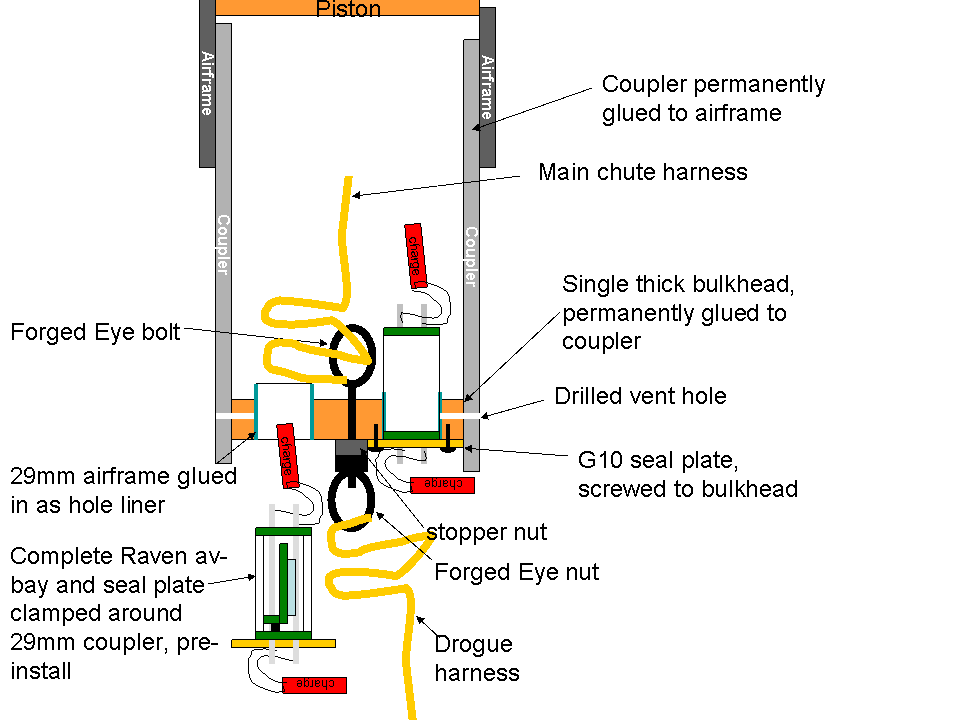- Joined
- Jan 19, 2009
- Messages
- 14,955
- Reaction score
- 1,287
One of the things I've always wanted to do, but have never gotten around to, is to come up with a modular, drop-in avbay that I can swap readily between rockets. This is to avoid building custom sleds for each and every rocket, and having to remount electronics.
Instead, I wanted one module that I build for, then just drop the module in the particular rocket.
With the new Raven AvBays, I realized I have the platform for just that.
I decided to use the 29mm as it's small enough to fit inside a 54mm tube fairly easily, while the 38mm doesn't leave much room inside a 54mm tube for other attachments.
-Kevin
Instead, I wanted one module that I build for, then just drop the module in the particular rocket.
With the new Raven AvBays, I realized I have the platform for just that.
I decided to use the 29mm as it's small enough to fit inside a 54mm tube fairly easily, while the 38mm doesn't leave much room inside a 54mm tube for other attachments.
-Kevin


















